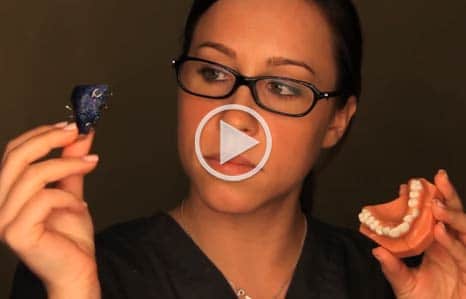The benefits of orthodontic treatment will last a lifetime if you wear your orthodontic retainers. Keep these important patient responsibilities in mind:
The Importance of Orthodontic Retainers
The benefits of orthodontic treatment can last a lifetime if you commit to wearing your orthodontic retainers. After all the time and effort you’ve invested in achieving your perfect smile, it’s essential to follow through with this final phase of treatment to maintain your results. Your journey isn’t over just because your braces have been removed—wearing a retainer is a critical step to ensure your smile stays beautiful and aligned.
Why Are Retainers Necessary?
Once your braces are removed, your teeth may naturally shift back to their original positions. Retainers play a crucial role in preventing this by stabilizing your teeth. They help your gums, bone, and surrounding muscles adjust to the new positioning of your teeth. Without a retainer, all the hard work you’ve put into straightening your teeth could be undone. Retainers provide the necessary support to hold your teeth in place, ensuring that your orthodontic treatment delivers long-lasting results.
Types of Retainers
Retainers are custom-made and come in two main types: removable and fixed. Both options offer unique benefits, and your orthodontist will recommend the type that best suits your needs.
Traditional Removable Retainers:
Traditional removable retainers typically feature a metal wire that surrounds the front teeth and an acrylic arch that sits against the roof of your mouth. The metal wire can be adjusted to make minor corrections to the alignment of your front teeth. These retainers are easy to use and can be removed for eating and cleaning.
Aligner-Style Retainers (Essix Retainers):
Aligner-style retainers, also known as Essix retainers, are a clear and aesthetic alternative to traditional wire retainers. These retainers are made from a mold of your newly aligned teeth and fit snugly over the entire arch or just the front teeth. Essix retainers are discreet, comfortable, and ideal for patients who prefer an inconspicuous option.
Fixed Retainers:
Fixed retainers consist of a thin wire bonded behind the bottom and/or top teeth. This type of retainer is not removable and provides constant support to keep your teeth in place. While fixed retainers are often required for at least a year after wisdom teeth extraction, they are sometimes kept in place indefinitely for long-term stability.
Key Considerations for Retainer Use
For Removable Retainers:
- Always store your retainer in its case when it’s not in use to avoid losing it.
- Remove your retainer before eating or brushing your teeth.
- Handle your retainer with care to prevent damage.
For Fixed Retainers:
- Cleaning around a fixed retainer requires extra effort. Use floss threaders to clean between the wire and your teeth.
- Schedule regular dental check-ups to ensure your fixed retainer remains in good condition.
Caring for Your Retainer
Proper care and cleaning of your retainer are essential to maintain its functionality and hygiene. Here are some tips to keep your retainer fresh and clean:
Daily Cleaning:
- Use a soft toothbrush to gently scrub away plaque and debris from your removable retainer. Be thorough, especially around grooves and ridges.
- For deeper cleaning, soak your retainer in a mixture of distilled water and baking soda or add a small amount of castile soap.
Avoid High Heat:
- Never boil your retainer or expose it to hot water, as the heat can warp and damage the material.
Storage:
- Always store your retainer in its case when not in use. This prevents damage and reduces the risk of losing it.
Odor Control:
- If your retainer develops an unpleasant smell, a deep clean with the methods mentioned above can help eliminate odors.
Maintaining Your Orthodontic Results
Wearing your retainer consistently is the key to preserving your beautiful smile. Skipping this important step could result in unwanted tooth movement, undoing the progress made during your orthodontic treatment. By committing to wearing and caring for your retainer, you’re investing in the long-term health and aesthetics of your teeth.
Tips for Success with Retainers
- Follow Your Orthodontist’s Instructions: Adhere to the recommended schedule for wearing your retainer, whether it’s full-time or only at night.
- Be Consistent: Make wearing your retainer a habit to avoid lapses that could compromise your results.
- Monitor Fit: If your retainer feels tight or uncomfortable, contact your orthodontist. This could indicate that your teeth are shifting and may require adjustments.
- Replace When Necessary: Retainers can wear out over time. Regular check-ups with your orthodontist will help determine if a replacement is needed.
Common Questions About Retainers
How long do I need to wear my retainer?
The duration varies depending on individual needs. Some patients may only need to wear their retainer for a year or two, while others may require lifelong use to maintain their results.
What happens if I lose my retainer?
Contact your orthodontist immediately. A replacement retainer can be made to prevent your teeth from shifting.
Can I eat with my retainer in place?
Removable retainers should always be taken out before eating to avoid damage and maintain hygiene.
How do I know if my fixed retainer is damaged?
If you notice any looseness or sharp edges, schedule a visit with your orthodontist to have it repaired or replaced.
Conclusion
Orthodontic retainers are a vital part of your orthodontic treatment journey. They ensure that your hard-earned results last a lifetime. By choosing the right type of retainer and committing to proper care and use, you can enjoy a beautiful, straight smile for years to come. If you have questions or need assistance with your retainer, the team at Rad Orthodontics is here to help. Schedule an appointment today to keep your smile looking its best.
